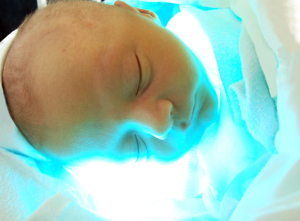Alagille Syndrome
Alagille Syndrome is a chromosomal abnormality that occurs with a frequency of 1 in 100,000 live births.
There is a partial or complete deletion of the jagged-1 gene locus on the 20p.12 chromosome. This results in serious developmental problems of the fetus. As a result several organ systems are deficient. There is a characteristic facial appearance and this is associated with abnormalities in the liver, the heart, the skeleton, the eyes and the kidneys.
Signs and symptoms
The babies are first spotted in the newborn nursery when there is a prolonged neonatal jaundice, which is treated with ultraviolet light. A liver biopsy shows absent or too few intrahepatic bile ducts. Others are diagnosed because of heart disease with right sided heart failure (unusual otherwise in this age group).
If the hepatic duct atresia (missing biliary ducts) is severe, a liver transplant needs to be made. Here is a list of malformations associated with Alagille syndrome (thanks to circ.ahajournals.org for the image).
Pulmonary stenosis or stenosis in the pulmonary vessels can lead to right sided heart disease. In addition there can be other congenital heart defects, such as an atrial septal defect, ventricular septal defect, patent ductus arteriosus or tetralogy of Fallot. In these cases the pediatrician would detect certain abnormal heart sounds and heart murmurs. The kidneys have often cysts or a condition called renal tubular acidosis, where acids are not adequately eliminated. Bone deformities in the vertebral bodies are common, which can be seen on X-rays as “butterfly vertebrae”. Others have a shortened ulna or radius or shortened finger bones. There is often a characteristic finding in the back of the eye that an eye specialist will detect, called “posterior embryotoxon”.
Diagnostic tests
Liver, heart and kidney function have to be determined early in infancy to reduce mortality. Most children are diagnosed when less than 6 months of age, mostly because of jaundice, otherwise because of heart problems.
A JAG1 defect can be identified by FISH analysis (“fluorescence in situ hybridization”), which shows the location of the defect on chromosome 20 (20p.12).
Prognosis
If serious heart abnormalities are found, these may have to be attended to by a pediatric heart surgeon. If serious cholestatic jaundice is due to missing biliary ducts, an early liver transplant may be required for survival of the child. There is an overall mortality rate of 10% due to heart, liver or kidney disease. Those with modestly diminished biliary tract disease in the liver, who do not need a liver transplant, have a survival rate of 80% over 20 years. Those with more severe liver disease who did need a liver transplant early in life have a 20 year survival of about 65%.
References:
Behrman: Nelson Textbook of Pediatrics, 17th ed., © 2004 Saunders, An Imprint of Elsevier: Chapter 70 – Chromosomal Clinical Abnormalities







